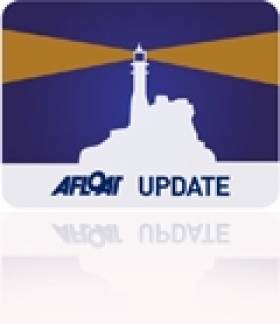Displaying items by tag: Jochen Schümann
Largest Fastnet Yacht Claims Monohull Line Honours
#fastnet – Jochen Schümann, Skipper of Esimit Europa 2, Maxi RP100: 30.48m (100ft) (SLO), crossed the finish line of the 2013 Rolex Fastnet Race at the Plymouth Breakwater at 02:17:49 on Wednesday, 14th August after an elapsed time of 2 days, 12:27:49.
The largest yacht in the IRC class, Esimit Europa 2, has so far claimed 25 line honours of all attended races, and set 6 course records.
At 17:00 BST she was 85-nm from the finish line in Plymouth, with the crew reporting an ETA of 01:00 BST Wednesday morning. In the prevailing light conditions, Esimit Europa 2 has a natural advantage over her nearest rival, Mike Slade's heavier ICAP Leopard (GBR) and consequently throughout the day has been able to build what looks like an insurmountable lead. It currently stands at 20-nm.
Volvo 70 Team SCA (SWE) is making good progress on the heels of ICAP Leopard currently finding itself in a strong position with the IRC rating system taken into account. "Since the Fastnet Rock we have been pushing into this lighter stuff," reported Team SCA's Brad Jackson. "The boats behind us keep coming at us but we eventually hit some breeze and keep getting away. We'll keep trying to do that for a while." It was the first time some of us have seen the Rock, which is pretty cool.
Among the chasing group is Bella Mente who continues to prevail in the clash between the two 72-ft Mini Maxis. Hap Fauth's American crew rounded the Fastnet Rock at dawn this morning and, despite having to repair a broken mainsheet, the crew were in good spirits, reporting: "It was the first time some of us have seen the Rock, which is pretty cool. Rán 2 rounded the Rock a good distance behind us so we need to build on that lead a bit more for the anticipated light air finish." Rán 2's slow passage around the Rock bordered on tedium. "All this hard work for a small rock in the [Celtic] Sea!," they jokingly blogged. "After rounding the Rock we are racing back towards Plymouth hopefully with more wind." Bella Mente continues to enjoy a 5-nm advantage, 140-nm to finish.
The bulk of the 336-strong fleet is still en-route to the Fastnet Rock, the 611-nm race's emblematic halfway point. It is proving a highly tactical, challenging race with numerous wind shifts to respond to. Crews are having to strategically manage their resources with many long hours at sea still forecast. Andrew Pearce's Ker 40 Magnum 3 (GBR) currently 10-nm from the Rock reported: "Last night was much colder, although the increased fatigue probably played a part. We are reduced to a three-watch system of two hours instead of three in order to make sure a fresh watch is always on deck. Nevertheless, the relentless pace and difficult conditions mean tiredness is relatively inescapable."
A sentiment likely to be felt throughout the fleet as they head into a third long night. At 17:00 BST, 29 yachts had rounded the Fastnet Rock. To date, there have been eight retirements.





























































